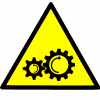Leaderboard
Popular Content
Showing content with the highest reputation since 09/22/2024 in all areas
-
I noticed that this morning. However, I'm adjusting some knobs behind the scenes. There will still be some that get through and I will be monitoring the forums for the next few weeks to optimize the settings.5 points
-
@hooovahh Is still weeding out the spam. I think he's in the eastern US time zone so he's 3 hrs. ahead of me ☺️. Much thanks to him. But I'm also improving the filters. Unfortunately, I think there are some sleeper accounts that were created before the changes that are starting to post. But, yes, I think it's getting much better. BTW, I just discovered that if you ctrl+right click a posted image you can set its' size! neat.4 points
-
Says the account with "AI" right in the name. Hiding in plain sight! eta: In fact, you can't even pronounce it without saying "AI" - "A I va lee oh tis". Well, I can't, anyway...4 points
-
I've had to disable all external services used to login to LAVA such as Google, Facebook etc. If you were using these services and now cannot login. Please send an email to s u p p o r t (at) l a v a g (dot) o r g with your login email address and I will reset your password so you can use the built-in login method. This is a permanent change moving forward. Sorry for the inconvenience.4 points
-
Hello. I am not a bot... I'm planning on taking the site offline this weekend to perform long overdue upgrades and to investigate ways to curb the spam attacks. Thanks to everyone for all the help cleaning up the forums. Hopefully I can find a solution and we can get back to the usual next week.3 points
-
I have published a 0.3.1 package on VIPM.io with Antoine's changes (LabVIEW 2017). Then I've accepted your Pull Requests and published a 0.4.0 version as well (LabVIEW 2019): https://www.vipm.io/package/jdp_science_postgresql/2 points
-
I was relieved to login this morning and not see pages worth of spam when I clicked on the "Unread Content" link. Awesome job to all!2 points
-
It's not listed in https://www.ni.com/en/support/documentation/bugs/24/labview-2024-q3-bug-fixes.html As LabVIEW user I feel happy for their attention to this. As OpenG ZIP developer I feel a bit cheated. 😁1 point
-
1 point
-
When you search for a LabVIEW toolkit, you should start on www.vipm.io Take a look at this one : https://www.vipm.io/package/hse_lib_gitlab_api/ if you need support HSE has a discord server, they are quite responsive.1 point
-
What have you tried so far? https://docs.gitlab.com/ee/api/rest/ documents a REST API to gitlab servers. Did you look at that? Did you try anything? There is for instance the JKI REST API Toolkit that should let you talk to this.1 point
-
My derived clock only goes as low as 4.69 MHz. My device is CRIO-90431 point
-
I fully agree that anything, even smoke signals in the wind, are better that NSVs. I'm using Redis, I also started from an existing lib found on the interweb, tweaked a bit for my needs. We now have multiple golang services as well as LabVIEW services connecting to Redis for cache and using RabbitMq for messaging. For some small tests on my Windows machine I've used Redis on WSL, easy to use. At the next local user group meeting I might do a short presentation about it, if you have faced any issues, I'd be interested in your feedback. Cheers1 point
-
Coming back to report. Scavenging the net I've found essentially three set of connectors between Redis and LV: what can be downloaded from https://forums.ni.com/t5/Example-Code/REDIS-database-LabVIEW-toolkit/tac-p/3508611 taking into account the corrections listed in the thread. This seems to be the more widespread, considering even that it was shown as an option at the CERN LV user group this year (see https://indico.cern.ch/event/1388470/contributions/5911487/attachments/2843544/4971934/lugm_LabVIEW_at_CERN.pdf, slide 22). Dates originally to 2014. Nick Folse's https://github.com/tauterra/Redis-Client-for-LabVIEW of about three years ago, according to its author no further developed. Found a couple of flaws, easily corrected. https://github.com/Bas-vE/LV-Redis , which claims to be an evolution of 1., promoted to LVOOP. Most recent of the three. The philosophy of the three toolboxes differs somewhat from one to the other, the first one being more of the kind "one VI for each Redis command", the others putting perhaps more the accent on the transaction protocol than on the completeness of the commands implemented. Redis's huge command set also expanded during the years in question. However, I found in all three something which looks to me a bit of a no brainer, which is that TCP client connection are opened and then closed for each elementary operation. While that might have a minor performance impact, I found that the approach prevents Redis' MULTI pipelining. I have forked 1. in https://github.com/EastEriq/redis-in-labview and 2. in https://github.com/EastEriq/Redis-Client-for-LabVIEW for dwelving into. Finally, I have resolved for adopting my fork and augmentation of 1. in my project, but only after I modified it so that TCP connections can be kept open throughout the client sessions.1 point
-
It seems to start to work! Unless of course you have hired some elves that keep checking the forum and deleting any account created with nefarious motives. 😀 But it is quite some time that I came in the office in the morning and didn't get greeted by a stream of products of humanities lowest when opening LavaG. In fact there seems none, and the latest new member is already 21 hours ago and still has 0 accounted posts for, so he may be actually genuine. Just hope that the moderators new message queue isn't overflowing with held back posts. Although you can always hope that it will die down once they realize that it has exactly 0.0% reach factor.1 point
-
Skip the PXI DMM, FG and scope cards, they are expensive and usually do not perform as well as standard instruments. Instead pick whatever instrument fits your requirement with a modern interface (LXI, USB) and a rack kit. Example Keysight 33465A vs NI PXI DMM. The NI card is ~4000USD, with slightly worse performance. Definitely use the PXI for massive multiplexers, DAQs, Digital interfaces (CAN, I2C etc) and GPIO. Also, take into account that PXI is being phased out in favor of PXIe. Some of NI PXI muxes are EOL, without an alternative.1 point
-
Here is a new version 4.2.0b1 for the ZIP library. I didn't test it in every LabVIEW version on every platform. What I did test was MacOSx 32-bit and 64-bit LabVIEW 2014, Windows 32-bit and 64-bit LabVIEW 7.0, 7.1, 8.6, 2009, 2016, 2018, Linux 32-bit 7.1 and 8.6, and NI Linux x86 LabVIEW 2016. Other realtime targets I hadn't handy at the moment. Support for Linux 64-bit and NI Linux RT ARM as well as VxWorks and Pharlap is contained. The realtime support will only get extracted when installing into LabVIEW for Windows 32-bit and through a seperate exe file that is invoked and will prompt for an administrative elevation of this installer. You then have to go into NI Max and into the Software part of your target and select to install additional components. In the list should be an OpenG ZIP Tools version 4.2.0 package visible. Select that to be installed on your target. There are still following problems that I haven't implemented/fixed yet: 1) archives that contain file names with other encodings than your platform code page will go certainly wrong. This is probably not solvable without doing absolutely every file IO operation in the shared library too, since the LabVIEW file IO functions don't support any other encodings in the path. 2) If you try to zip up directories containing soft/hard inks then the current implementation will compress the actual target file/directory into the archive instead of a link and expanding zip archives that contain such links will expand just a small text file continaing the link destination. This is something I'm looking into to solve in the next release by allowing optionally adding a special link entry into the archive and create such a link on the filesystem when extracting. This is mostly of concern on Linux and MacOSX. While Windows also allows for such links nowadays it is still quite an esoteric feature and user accessible support for it is minimal (you have to use the command line or install additional third party tools to create/modify such links). Hope to hear from other platforms and versions and how it goes there. Without some feedback I'm not going to create a release. oglib_lvzip-4.2.0b1-1.ogp1 point










